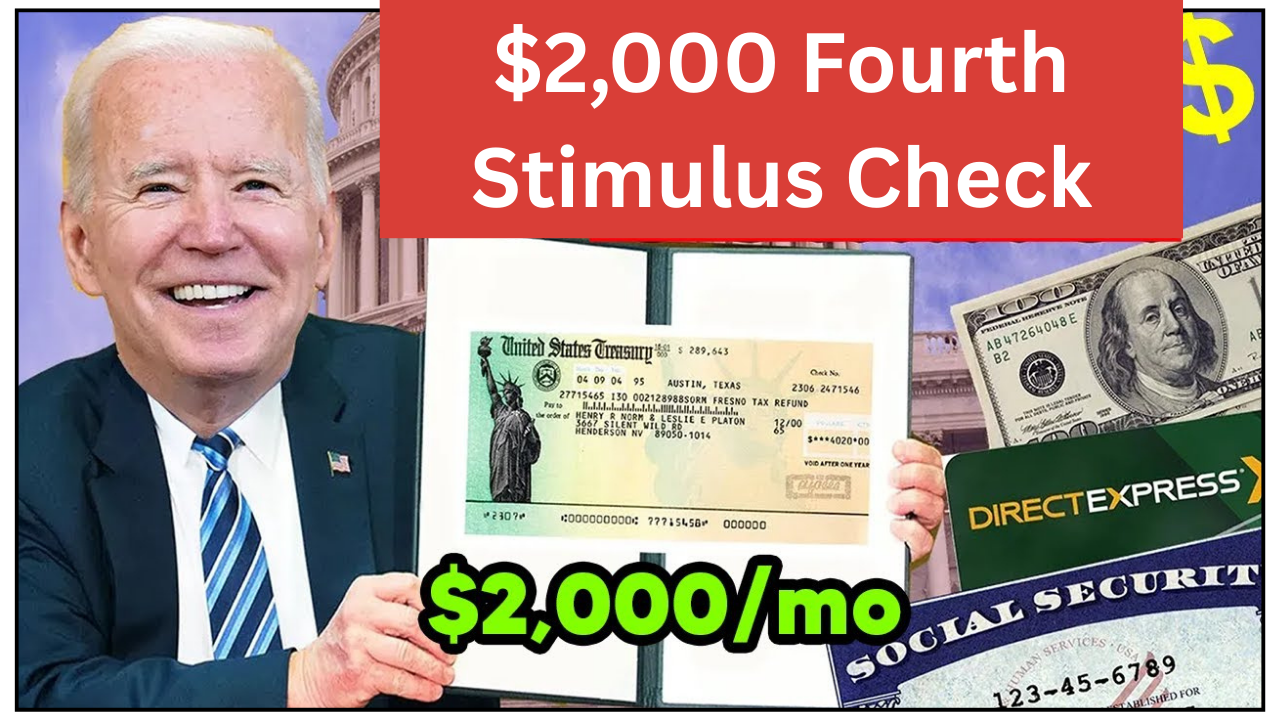Rumors about a $2,000 fourth stimulus check have been buzzing across the United States, especially on social media, as families grapple with rising costs for groceries, rent, and gas. Many Americans are hoping for extra cash to ease financial stress, but is this payment real? As of August 2025, no official confirmation from the government backs these claims. Let’s dive into what’s known about the proposed stimulus, who might qualify, and when payments could arrive, while separating fact from fiction.
The Buzz Around a New Stimulus Check
Talk of a fourth stimulus check started gaining traction in early 2025, fueled by posts on platforms like X and unverified websites. Some sources, like a July 19 article by Rick Adams, suggested lawmakers were feeling public pressure to approve $2,000 payments to help with inflation. Social media posts have claimed payments could start as early as July or August 2025, but these timelines lack support from official sources like the Internal Revenue Service (IRS) or Congress. The last federal stimulus checks, part of the 2021 American Rescue Plan, provided up to $1,400 per person, and no new federal relief has been approved since then.
Why People Are Talking About Stimulus Again
Inflation has hit American households hard, with everyday items like food and fuel costing more than they did a few years ago. According to the Bureau of Labor Statistics, real purchasing power is slipping for many, especially seniors and those on fixed incomes like Social Security or disability benefits. Advocacy groups have pushed for a one-time $2,000 payment to help families keep up, arguing it could boost spending at small businesses, which have seen sales drop in recent months. Some politicians, including President Donald Trump, have floated ideas like a “DOGE dividend” tied to government savings, but these remain proposals without Congressional approval.
Who Might Be Eligible?
If a fourth stimulus check is approved, eligibility would likely mirror previous rounds. Based on the 2021 stimulus, single filers earning up to $75,000 annually and married couples earning up to $150,000 would likely qualify for the full amount. Payments could also include extra cash for dependents, such as $1,400 per child or adult dependent, as seen in the American Rescue Plan. Social Security recipients, including those on SSI or SSDI, and railroad retirees might automatically qualify, as they did before. However, undocumented immigrants would likely be excluded, though mixed-status households could still receive payments for eligible members.
| Eligibility Criteria | Details |
|---|---|
| Income Limits | $75,000 (single), $150,000 (married filing jointly) |
| Dependents | Possible $1,400 per dependent (child or adult) |
| Eligible Groups | Social Security, SSI, SSDI, railroad retirees |
| Exclusions | Non-residents, undocumented immigrants (with exceptions for mixed-status households) |
When Could Payments Arrive?
No official timeline exists for a fourth stimulus check because Congress hasn’t passed any legislation. Some unverified sources have suggested payments could start in late 2025 or early 2026 if approved, with direct deposits hitting bank accounts first, followed by paper checks or prepaid cards. The IRS would likely use updated tax return data or Social Security records to send payments automatically, as they did in 2020 and 2021. For now, claims of July or August 2025 deposits are not backed by evidence, and the IRS’s latest updates focus on tax security, not new relief. To stay safe, check official sources like irs.gov for updates.
Watch Out for Scams
The excitement over a possible stimulus check has led to a wave of scams. Fraudsters are sending fake texts, emails, and social media posts claiming people need to apply for the $2,000 payment or share personal details like Social Security numbers. The IRS never asks for sensitive information through unsolicited calls or messages. If you get a suspicious message, don’t click links or share data. Instead, visit irs.gov or contact the IRS directly at 800-829-1954 to verify information. Sticking to trusted sources keeps you safe from scams.
What to Do While You Wait
While a $2,000 stimulus check isn’t confirmed, there are steps you can take to prepare. File your 2024 tax return, even if you don’t normally need to, to ensure the IRS has your current information. Update your direct deposit details with the IRS or Social Security Administration for faster payments if a stimulus is approved. Some states, like New York and Pennsylvania, are sending out their own inflation relief checks, ranging from $200 to $400 based on income, so check your state’s tax website for local programs. If you missed the 2021 Recovery Rebate Credit, worth up to $1,400, the deadline to claim it was April 15, 2025, but future credits could still apply.
The idea of a $2,000 fourth stimulus check is appealing, but as of August 2025, it’s just talk without official backing. Families struggling with rising costs should stay cautious, avoid scams, and keep an eye on trusted sources like the IRS or Congress for real updates. While the economy remains tough, other relief options, like state rebates or tax credits, might offer some help. For now, don’t count on a check arriving soon, but stay ready just in case.
